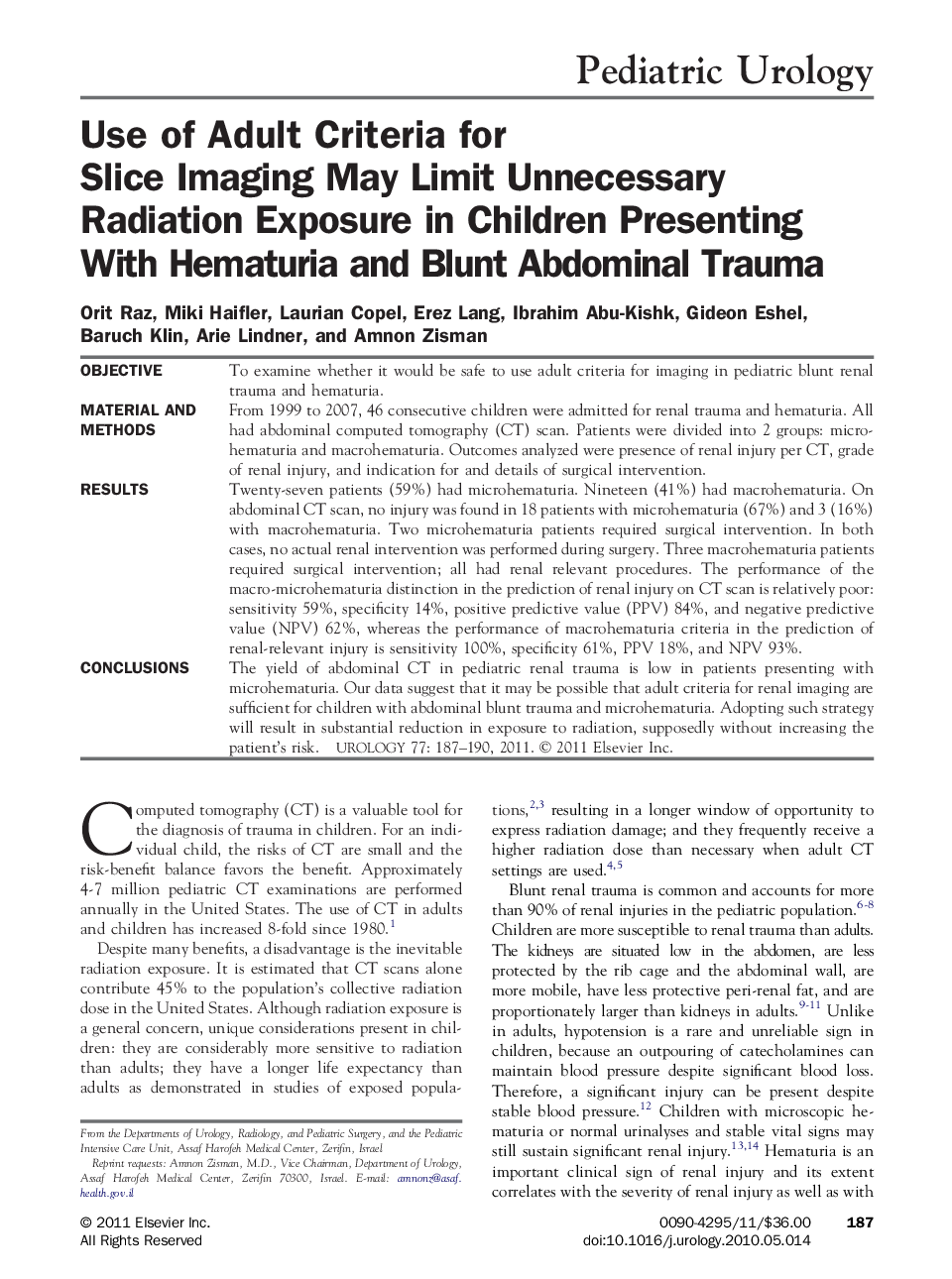| Article ID | Journal | Published Year | Pages | File Type |
|---|---|---|---|---|
| 3901710 | Urology | 2011 | 4 Pages |
ObjectiveTo examine whether it would be safe to use adult criteria for imaging in pediatric blunt renal trauma and hematuria.Material and MethodsFrom 1999 to 2007, 46 consecutive children were admitted for renal trauma and hematuria. All had abdominal computed tomography (CT) scan. Patients were divided into 2 groups: microhematuria and macrohematuria. Outcomes analyzed were presence of renal injury per CT, grade of renal injury, and indication for and details of surgical intervention.ResultsTwenty-seven patients (59%) had microhematuria. Nineteen (41%) had macrohematuria. On abdominal CT scan, no injury was found in 18 patients with microhematuria (67%) and 3 (16%) with macrohematuria. Two microhematuria patients required surgical intervention. In both cases, no actual renal intervention was performed during surgery. Three macrohematuria patients required surgical intervention; all had renal relevant procedures. The performance of the macro-microhematuria distinction in the prediction of renal injury on CT scan is relatively poor: sensitivity 59%, specificity 14%, positive predictive value (PPV) 84%, and negative predictive value (NPV) 62%, whereas the performance of macrohematuria criteria in the prediction of renal-relevant injury is sensitivity 100%, specificity 61%, PPV 18%, and NPV 93%.ConclusionsThe yield of abdominal CT in pediatric renal trauma is low in patients presenting with microhematuria. Our data suggest that it may be possible that adult criteria for renal imaging are sufficient for children with abdominal blunt trauma and microhematuria. Adopting such strategy will result in substantial reduction in exposure to radiation, supposedly without increasing the patient's risk.
